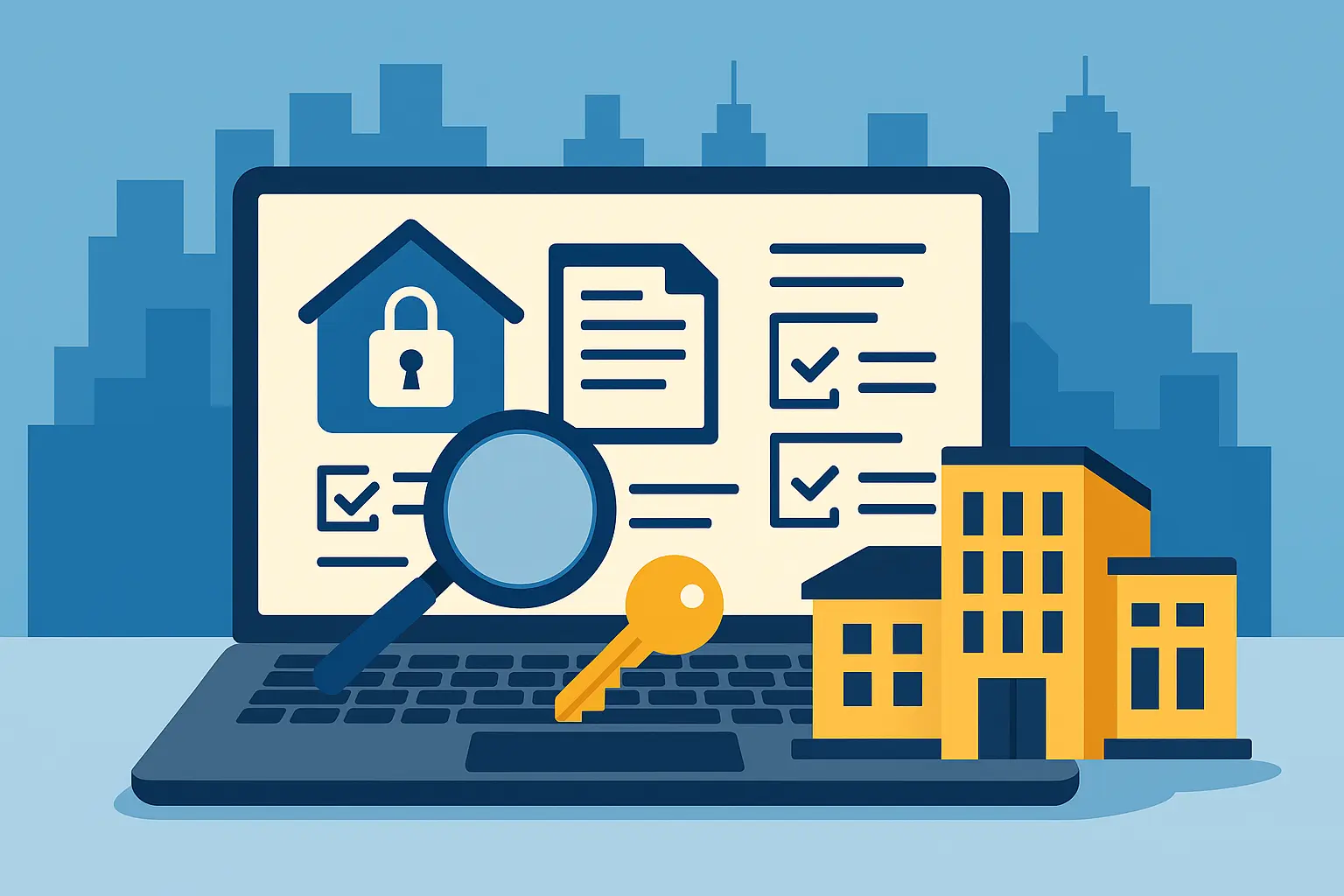Surprisingly or not, 98% of business owners don’t know the actual value of their business assets. That said, it is impossible to underestimate the importance of business valuation.
In this article, we’ll discuss business valuation methods, some benefits and drawbacks of each, and how to combine different methods effectively for calculating a business’ value. We’ll also provide a complete, easy-to-follow business valuation checklist template.
Business valuation
A business valuation is a process of calculating the economic value of a business entity based on financial, market, and economic data.
The common methods include assessing the business’ market capitalization, earnings multipliers, and book value.
Business people perform valuations for various reasons. The most common ones include:
- Mergers and acquisitions. Business valuations are often conducted to determine the fair market value of a company in preparation for a merger or acquisition.
- Financing. Business valuations may also be required by lenders or investors before providing funding.
- Tax purposes. Business valuations may be necessary for tax purposes, such as estate planning, gift taxation, or determining the value of a business for tax reporting purposes.
- Litigation. In legal proceedings, a business valuation may be required to determine the economic damages incurred by a business or to value a business interest in a divorce or other legal dispute.
- Strategic planning. Business valuations can also be used for strategic planning purposes, such as evaluating the value of a business in preparation for a sale, or for internal purposes like performance management or equity sharing among business partners.
Overall, business valuation is a critical tool that helps stakeholders better understand the financial health and potential of a company, which is essential for informed decision-making.
Key takeaways:
- The business valuation process aims to calculate the economic worth of a business or its unit.
- Business valuation serves various purposes, such as determining the market value of a business for sale, establishing ownership among partners, taxation, or divorce proceedings.
- Various methods can be used for business valuation, including assessing its market capitalization, earnings multipliers, and book value.
How to prepare for a business valuation
Before initiating a valuation, it is important to take several crucial factors into account. These factors include the purpose of the valuation, the type of business being valued, and the availability of financial information.
- Valuation purpose. It is important to set clear goals for a valuation before the process begins, as the valuation may be required for different reasons — from M&A and financing to tax reporting, litigation, or strategic planning.
- Business type. The type of business being valued will also impact the valuation process. For instance, a service-based business will have different valuation criteria than a technology company. Some factors to consider may include industry standards, customer base, competitive landscape, and potential for growth.
- Availability of financial information. It is crucial to have access to all relevant financial information to conduct a thorough valuation. This may include financial statements, tax returns, budgets, and projections. The completeness and accuracy of this information can have a significant impact on the company valuation results.
- Market and economic background. Economic and market conditions can significantly affect a business’ valuation. Factors like interest rates, inflation, supply and demand, capitalization of earnings, and net income should be taken into consideration for an accurate valuation.
- Management and operations. The management team and operational efficiency of the business can also affect the valuation. Factors like employee turnover rates, management expertise, and scalability can have an impact on the overall value of the business.
- Regulatory conditions. The regulatory conditions the business operates in can also impact its value. For instance, if there are changes in regulations that affect the industry or the business itself, this can impact its financial performance and estimated value.
Methods of business valuation
According to Deloitte, business valuation involves a quantitative analysis of historical financial performance and long-term projections, as well as a qualitative analysis of factors such as customer base, market share, and management team strength.
The most common approaches to private company valuation are:
- Income-based approach — using discounted cash flow analysis
- Market-based approach — comparing it to similar publicly traded or recently acquired competitors
- Cost-based approach — valuing all business assets and deducting liabilities
Experts typically use a combination of income and market approaches for trading businesses to determine a company’s value. Below we’ll overview some of the most common business valuation types — and the benefits and drawbacks of each:
- Market capitalization
- Times revenue method
- Earnings multiplier
- Discounted cash flow
- Book value
Market capitalization
The market value business valuation formula is considered one of the easiest yet most subjective ways to determine a business’s worth in the finance industry. This method compares an organization to similar ones that have most recently sold to get a frame of reference for calculating their value.
Essentially, this approach uses comparison as a tool to determine worth. To estimate it, multiply the company’s share price by the total number of company-owned outstanding shares.
For example, if a similar business sold for $5 million, your business may be worth in that range, assuming other market and financial factors are similar as well. However, there are several drawbacks of this method worth taking into consideration:
- The accuracy of this method depends on how similar your products, balance sheet, revenue, and growth rate are to those of comparable companies.
- There’s a risk of over- or under-valuing your business, as it may not always match up perfectly with comparable companies; therefore, adjustments need to be made to account for the differences.
- This method requires access to sufficient market data on competitors, which can be challenging for sole proprietors as they lack comparative data on the sale of similar businesses.
That said, while the market value method is a good starting point to get an idea of your business’s worth, it’s recommended to combine it with another more accurate approach.
Times-revenue method
The times-revenue valuation method applies a multiplier to a stream of earnings generated over a specific period. This multiplier depends on the economic environment and the company’s industry.
For instance, a manufacturing business may be valued at 3x revenue, while a service-based company may be valued at 0.5x revenue.
Just like in the case above, there are certain limitations to this method as well:
- Firstly, it assumes that the revenue streams will stay consistent in the future, which is not always the case.
- Secondly, it doesn’t take into account factors such as profitability or cash flow, which are crucial in determining a company’s value.
- Finally, the multiplier used can be subjective and vary depending on the industry and economic climate.
Despite these limitations, the times revenue business valuation method can be a useful approach to consider when valuing a business. It can be particularly helpful for companies with a reliable and consistent revenue stream, as well as for fundraising startups with limited financial history.
Earnings multiplier
Known as an alternative to the times revenue method, the earnings multiplier approach considers a company’s profits to be a more stable indicator of its financial health than sales revenue.
The earnings method adjusts future profits against cash flows that could be invested at the current interest rate over the same period of time. Essentially, it adjusts the current P/E ratio to account for current interest rates, which provides a better picture of a company’s accurate value.
Just like with other methods, there are also some drawbacks:
- Firstly, it relies on accurate and reliable earnings data, which may not always be available or may be subject to manipulation.
- Secondly, it assumes that the company’s earnings will continue to grow at a steady rate, which may not be realistic, especially for small businesses and startups.
- Finally, the earnings multiplier used can be subjective, as it also varies based on the industry and the economic conditions.
Despite these limitations, the earnings multiplier method can be a valuable approach when valuing a business, especially for mature companies with a solid earnings history. It provides a more accurate and reliable indicator of a company’s financial success and potential for future growth.
Discounted cash flow
The discounted cash flow (DCF) method is another business valuation approach. It relies on projections of future cash flows, adjusted to determine the company’s current market value. The key difference between this method and the earnings multiplier is that the DCF method takes inflation into account when calculating the present value of future cash flows.
The DCF analysis can be particularly useful for companies with uncertain or volatile future earnings. However, it is important to note that even small variations in the projected growth rate, perpetual growth rate, or cost of capital can result in significant differences in valuation. This has caused some criticism around the accuracy and efficiency of DCF.
Despite this, the DCF method can provide a fairly accurate estimate of a company’s current value based on its expected future cash flows. It is a flexible method that can be tailored to the specific circumstances of each business, making it a useful tool for business owners, potential investors, and analysts.
Book value
The book value of a company calculates the shareholders’ equity as shown on the balance sheet statement. It is estimated by subtracting total liabilities from total assets.
While this approach can be useful for businesses with valuable business assets but low profits, it has its limitations:
- The book value method does not take into account such important factors as brand value, intellectual property, and future earning potential.
- Besides, the value of business assets on the balance sheet may not reflect their actual market price.
In conclusion, the book value method is the most suitable for businesses with significant tangible assets and relatively simple operations. However, just like in the cases above, the book value method should be used in combination with other methods for a more accurate valuation, especially for businesses with intangible assets and complex operations.
While the methods discussed above are commonly used for business valuation, there are numerous other approaches to consider. Less popular but still highly appropriate methods include replacement value, breakup value, asset-based valuation method, and liquidation value.
Business valuation checklist
Now, let’s see what company information each business owner should prepare when conducting a business valuation.
We’ve created a complete business valuation checklist, which covers financial, legal, and operational categories.
| Financial statements | Financial statements Balance sheets of company bank accounts Business plans and financial modeling Cash flow statements Profit and loss (P&L) statements Payoff information Tax returns Accounts receivable and payable Budgets and projections Loan documents Inventory reports Documents on real estate owned Information on all equipment owned Information on all shares owned |
| Legal documents | Articles of incorporation Licensing agreements Bylaws and operating agreements Contracts and agreements with customers and suppliers Leases and rental agreements Intellectual property documents: patents and trademarks Employment contracts Insurance policies |
| Operational documents | Sales and marketing plans Customer databases and records Production and manufacturing processes Inventory management systems Information technology systems and software Human resources policies and procedures Employee records and benefits plans |
It’s important to note that the specific documents needed in this business valuation checklist may vary depending on the type of business and industry.
While our checklist is comprehensive and ready to use, we recommend consulting a professional business appraiser or broker to determine which documents are necessary for the most accurate business valuation.
Business valuation best practices
We’ve gathered some of the best practices from industry experts to maximize business valuation outcomes. These include:
- Calculate the owner’s discretionary earnings (ODE)
- Determine the seller’s discretionary earnings (SDE) multiplier
- Familiarize yourself with your industry and your position in it
- Evaluate your business assets and liabilities
- Pay more in taxes
- Consider seeking expert assistance
- Consider using professional tools
1. Calculate the owner’s discretionary earnings (ODE)
To arrive at a more accurate picture of a company’s profitability and potential, it is essential to calculate its owner’s discretionary earnings (ODE). This includes the pretax income of a business subtracting non-cash expenses, the owner’s salary, and one-time expenses. A tax return may not provide a comprehensive view of a company’s revenue.
2. Determine the seller’s discretionary earnings (SDE) multiplier
A company’s SDE multiplier compares its value against that of other companies in the same industry. Using SDE to value a business, statistics show that businesses typically sell between a multiplier of 1-4. However, your multiplier may be higher or lower depending on factors such as the size of your business, its location, assets, and other variables.
If the company’s success depends on specific individuals, the multiplier will likely be lower. Conversely, if the industry is growing, the multiplier may be higher, and the company may be worth more.
3. Familiarize yourself with your industry and your position in it
Understanding your industry and how your company fits into it is crucial to determine your company’s value. Research other similarly-sized players in your industry and compare them to gain clarity on your value within the sector.
4. Evaluate your business assets and liabilities
To evaluate your assets properly, you must first fully understand your assets and liabilities.
Assets can be either tangible or intangible. Tangible assets have a measurable monetary value, such as cash, inventory, or investments. Intangible assets, such as patents and trademarks, can significantly impact your SDE multiplier and overall earning potential.
Liabilities refer to debts and other financial obligations that a potential buyer would have to take into account. This can include notes payable, bank loans, or mortgages. Liabilities can influence the valuation of a business. Contingent liabilities should be assessed here as well. Contingent liabilities refer to potential liabilities that may occur at any point in the future.
5. Pay more taxes
Contrary to popular belief, reporting higher profits to the IRS can actually benefit small business owners in the long run. While many entrepreneurs try to minimize their tax liability by maximizing deductions, paying more in taxes can provide potential buyers with a clearer view of your company’s earnings through your tax returns. This can help establish your business’s true value and boost its valuation.
In fact, some experts suggest that for every dollar of profit you write off, you may be losing two to three times that amount in your company’s overall worth.
6. Consider seeking expert assistance
While it’s possible to make a rough estimate of your small business’s value using a simple calculation, not paying for a professional valuation can be costly. Therefore, opting for the services of a professional business appraiser or broker can offer several advantages.
These experts will perform a comprehensive evaluation of your company and provide a customized business valuation based on your area and sector. Moreover, a buyer will find it more difficult to contest a professional assessment.
7. Consider using professional tools
Consider using professional tools to ensure that your business valuation is accurate. Investing in online calculators and virtual data rooms can be beneficial in determining your business’s worth. With the use of professional tools, you can conduct a thorough business audit and identify areas where you can spend less money while improving efficiency.
Conclusion
Business valuation is the first step an organization takes before mergers and acquisitions, getting financing from creditors, or for valuation, taxation, and strategic planning purposes.
In this article, we’ve suggested a ready-to-use business valuation checklist that covers financial information, legal aspects, and operational documents.
Consider using our checklist, seek help from an expert, and rely on a combination of different valuation methods to make sure you conduct the process effectively.



